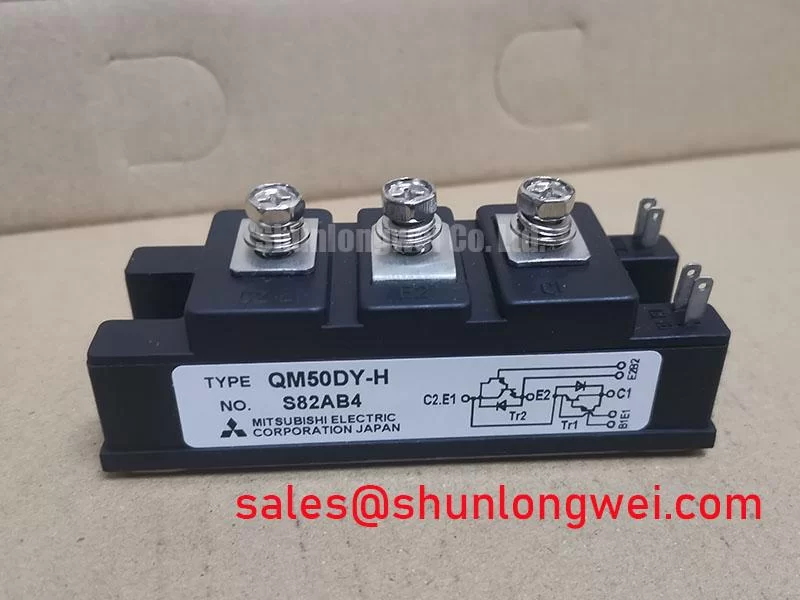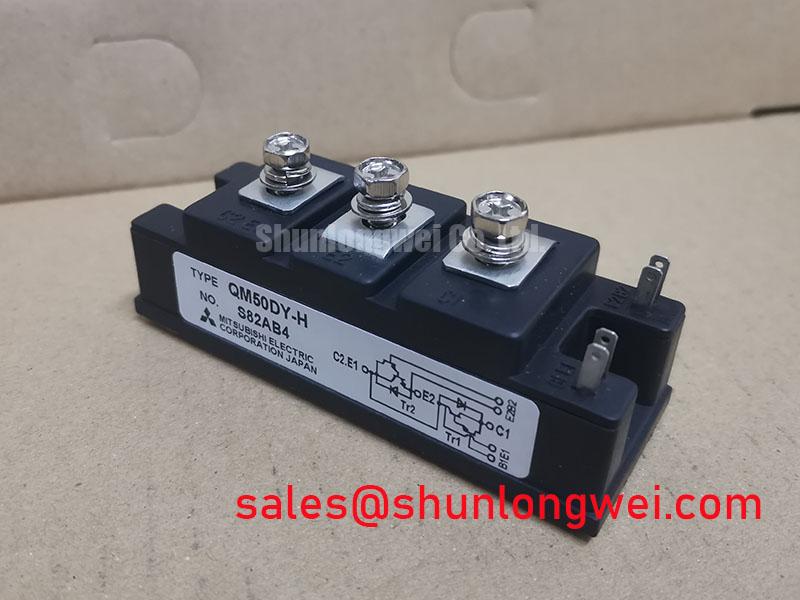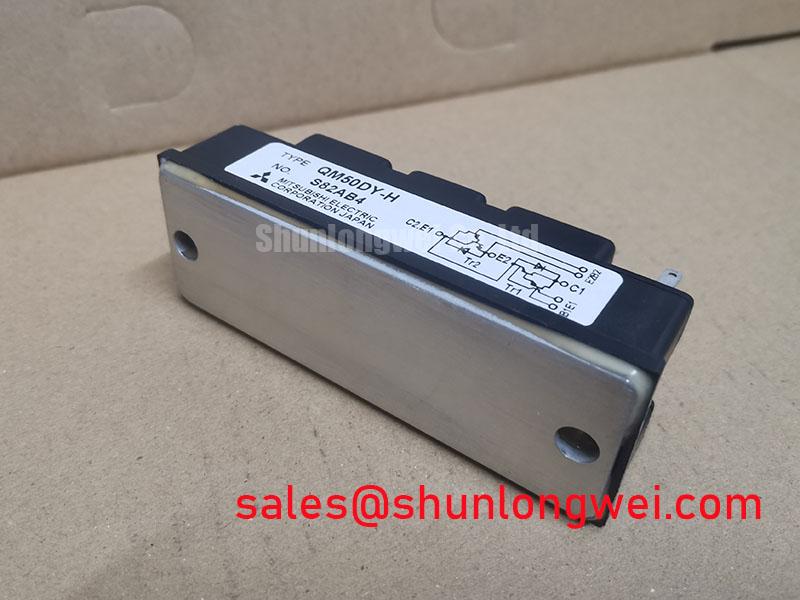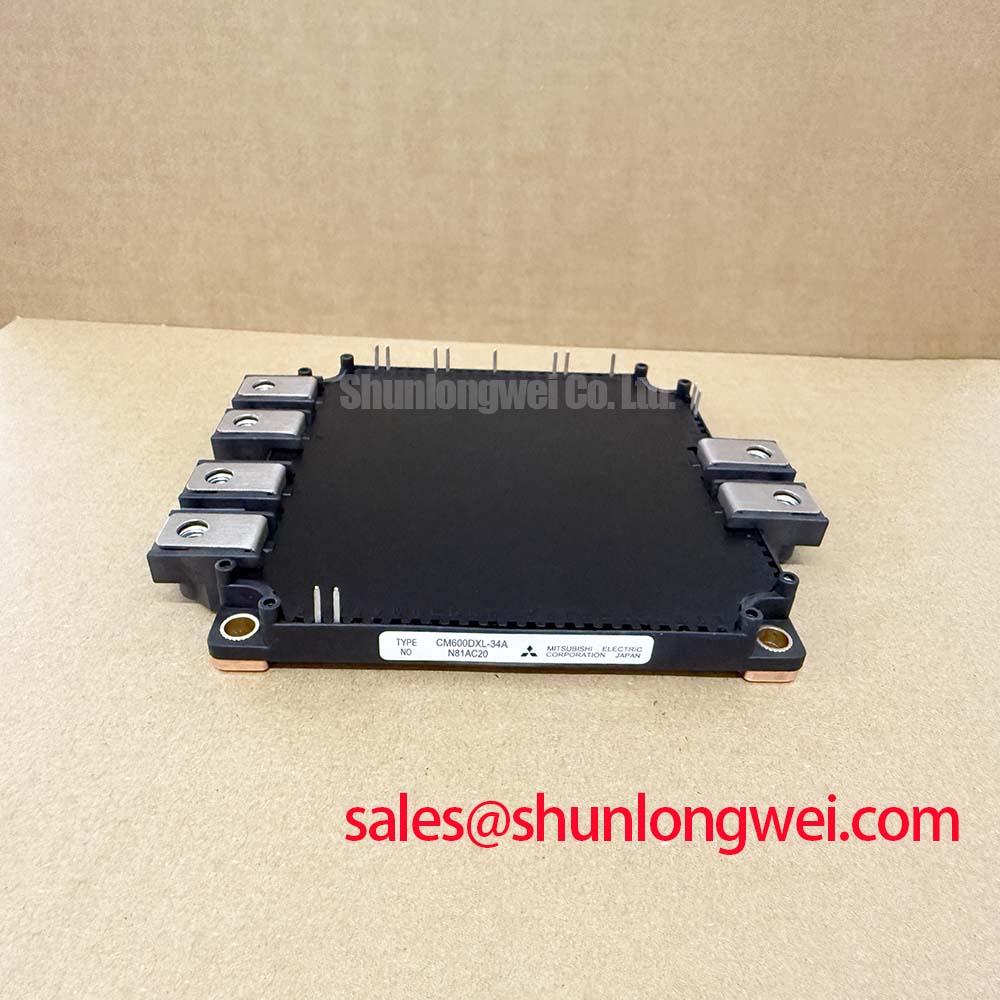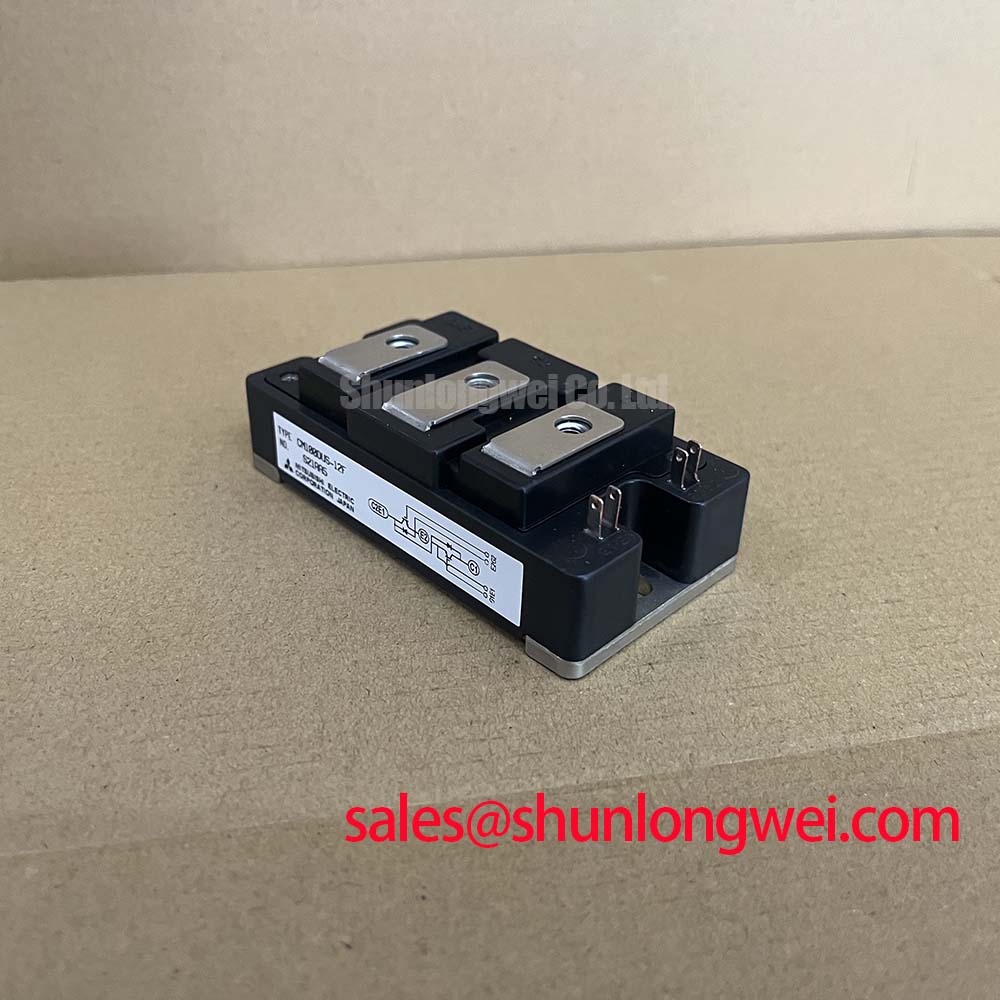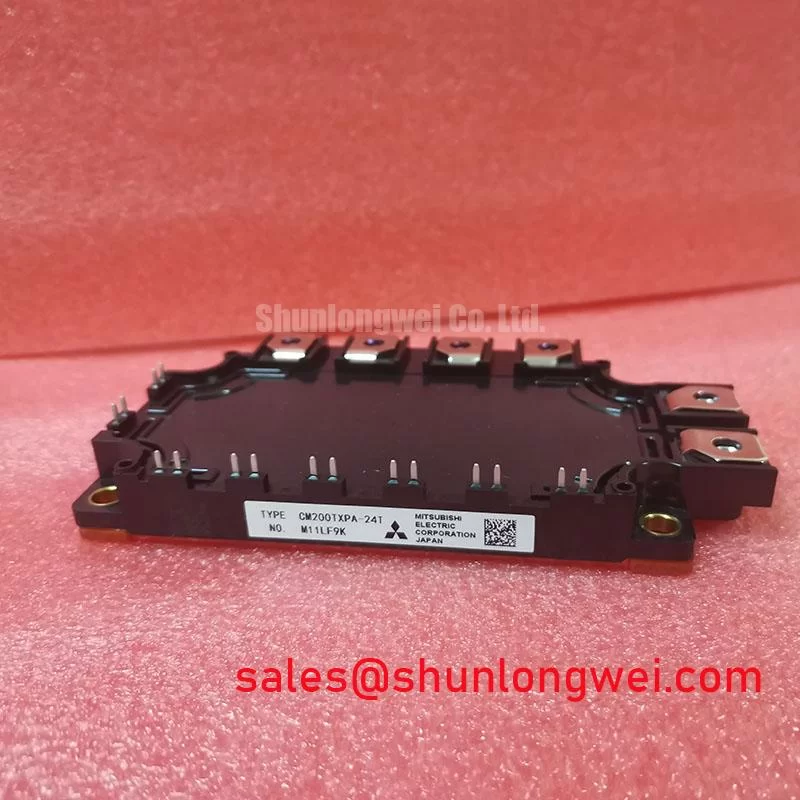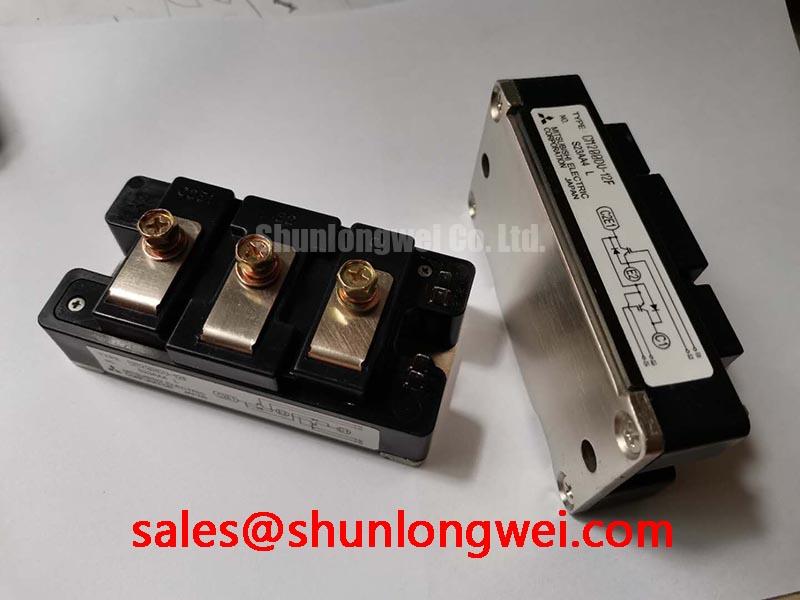Content last revised on November 20, 2025
QM50DY-H Datasheet, Specs & Engineering Analysis | 600V 50A Dual IGBT
Product Overview
A Robust 600V/50A Dual IGBT Module Engineered for Reliable Thermal Performance in Cost-Sensitive Industrial Applications.
The Mitsubishi QM50DY-H is a dual IGBT module designed for high-power switching applications, delivering a robust power stage solution with well-defined thermal characteristics. It integrates two IGBTs in a half-bridge configuration, rated for 600V and 50A, with a collector-emitter saturation voltage (VCE(sat)) of 2.7V. Key engineering benefits include simplified thermal design due to predictable performance metrics and a versatile topology suitable for various power converter designs. This module addresses the core engineering challenge of achieving reliable operation by providing clear thermal resistance data, enabling precise and effective heatsink engineering. For cost-sensitive 240V AC motor drives where robust thermal management is prioritized, the QM50DY-H offers a proven and predictable power stage solution.
Key Parameter Overview
Decoding the Specs for Thermal and Electrical Stability
The specifications of the QM50DY-H are tailored for durability and predictable behavior in industrial power systems. The following parameters are critical for design evaluation and thermal modeling. What dictates the thermal design for the QM50DY-H? Its maximum VCE(sat) of 2.7V and defined thermal resistance values.
| Absolute Maximum Ratings (Tc=25°C) | |
|---|---|
| Collector-Emitter Voltage (Vces) | 600V |
| Gate-Emitter Voltage (Vges) | ±20V |
| Collector Current (Ic) | 50A |
| Collector Current (Peak) (Icp) | 100A |
| Collector Power Dissipation (Pc) | 200W |
| Junction Temperature (Tj) | -40 to +150°C |
| Electrical Characteristics (Tj=25°C) | |
| Collector-Emitter Saturation Voltage (Vce(sat)) | 2.7V (max) @ Ic=50A, Vge=15V |
| Gate-Emitter Leakage Current (Iges) | 0.5μA (max) @ Vge=±20V |
| Collector-Emitter Cutoff Current (Ices) | 1mA (max) @ Vce=600V |
| Thermal Resistance (Rth(j-c)) per IGBT | 0.5°C/W |
| Thermal Resistance (Rth(j-c)) per Diode | 1.0°C/W |
Download the QM50DY-H datasheet for detailed specifications and performance curves.
Application Scenarios & Value
Delivering System-Level Reliability in General-Purpose Drives and Power Supplies
The QM50DY-H is engineered for applications where operational robustness and predictable performance are paramount. Its primary value is demonstrated in systems like general-purpose Variable Frequency Drives (VFDs), uninterruptible power supplies (UPS), and welding power supply units. A key engineering challenge in these systems is managing thermal stress, especially during low-speed, high-torque motor operation or under sustained load, where conduction losses become the dominant source of heat. The QM50DY-H's specified maximum VCE(sat) and clear thermal resistance (Rth) values allow engineers to move from estimation to calculation. This enables precise heatsink design and thermal management strategies that ensure the junction temperature remains safely below the 150°C limit, directly contributing to long-term system reliability. What is the main benefit of its half-bridge topology? It offers design flexibility for inverter and chopper applications. While the QM50DY-H is well-suited for 50A requirements, systems demanding higher current can utilize related modules such as the QM100DY-H for 100A capability within a similar package family.
Technical Deep Dive
A Closer Look at Conduction Loss and Its Impact on Thermal Design
A critical aspect of designing with the QM50DY-H is understanding the direct relationship between its collector-emitter saturation voltage, VCE(sat), and thermal dissipation. With a maximum VCE(sat) of 2.7V at its nominal 50A rating, the conduction loss for a single IGBT can be calculated as P_cond = VCE(sat) × Ic. This means that under full load, the device can dissipate up to 135W of power as heat. This VCE(sat) value acts much like a known friction coefficient in a mechanical system; it represents an unavoidable energy loss that manifests as heat. While lower values are characteristic of newer technologies, having a clearly defined maximum like 2.7V is crucial for worst-case thermal analysis, preventing over-temperature failures.
The bridge between this internally generated heat and the external cooling system is the thermal resistance, Rth(j-c), specified at 0.5°C/W. This parameter is analogous to the insulation of a container; it quantifies how effectively heat can travel from the IGBT junction to the module's case. A lower Rth(j-c) is always better, but a known value is essential. It allows an engineer to precisely calculate the required heatsink performance to maintain a safe junction temperature, ensuring the system operates reliably across all specified load conditions. For a detailed guide on preventing such issues, see this analysis on IGBT failure analysis.
Frequently Asked Questions (FAQ)
How does the 2.7V VCE(sat) of the QM50DY-H influence the inverter design process?
The 2.7V VCE(sat) is a primary determinant of conduction losses. Designers must factor this value into their thermal calculations to select an appropriately sized heatsink and, if necessary, implement a fan cooling strategy. It directly impacts the overall efficiency and power density of the final system, making thermal management a key design consideration from the project's outset.
What is the primary benefit of the module's isolated baseplate in an industrial environment?
The electrically isolated baseplate simplifies the mechanical assembly process and enhances safety. It eliminates the need for an additional, separate insulating layer (like a mica or silicone pad) between the module and the heatsink. This reduces component count, assembly time, and potential points of failure, while also improving the consistency of thermal transfer to the heatsink.
Your Next Step
Technical Evaluation and Sourcing
For design engineers and procurement specialists evaluating robust power components for industrial drives, welding systems, and UPS applications, the QM50DY-H provides a foundation of proven reliability. To further your technical assessment, we recommend downloading the official datasheet and utilizing the provided specifications to model its performance within your system's unique operational parameters. For inquiries regarding technical specifications or sourcing, please contact our team for expert support.

